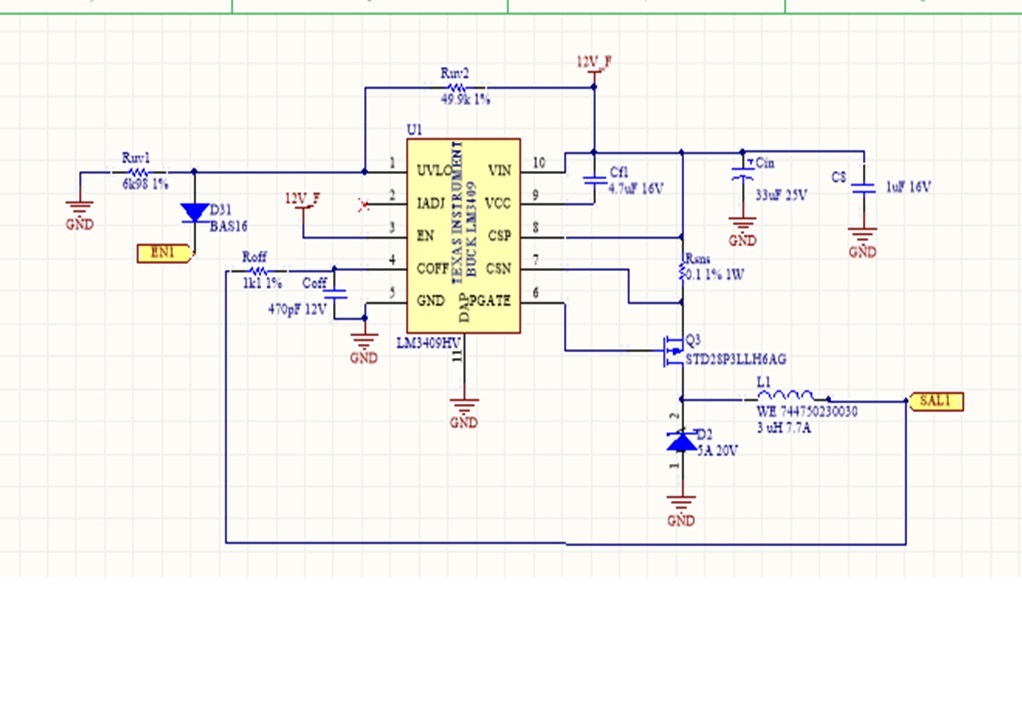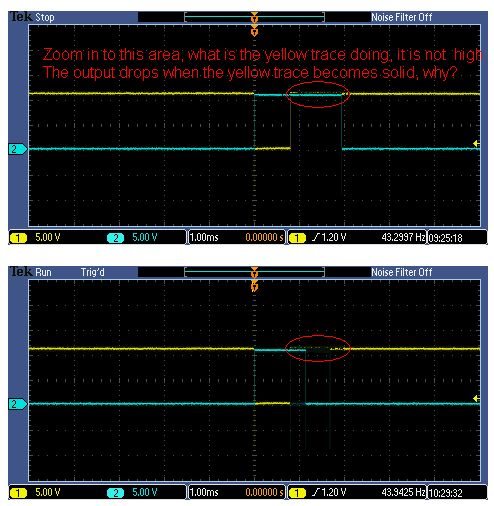Other Parts Discussed in Thread: LM3409
Hello all:
I have the following circuit
SAL1==> it has 2 rows of 4 leds each in paralell, each row 1 A, so SAL1 should conduct 2 A, at 11 V voltage
EN1 ==> it is a pulsed signal, duration of 800 us and about 20 FPS
However, I have some unstabiity in the output time, which should follow EN1 (Second image is EN1, first image is a reverse signal previous to EN1 called pulse1, for practical reason I will show most of times pulse1):
Signal is stable an clean. but when I probe sal1(blue), I have a signal that oscilate between 800 us to almost 2 ms attaced is shown some screenshots in the oscilloscope.
Honestly dont know what could happen. Maybe too much current?
Regards




